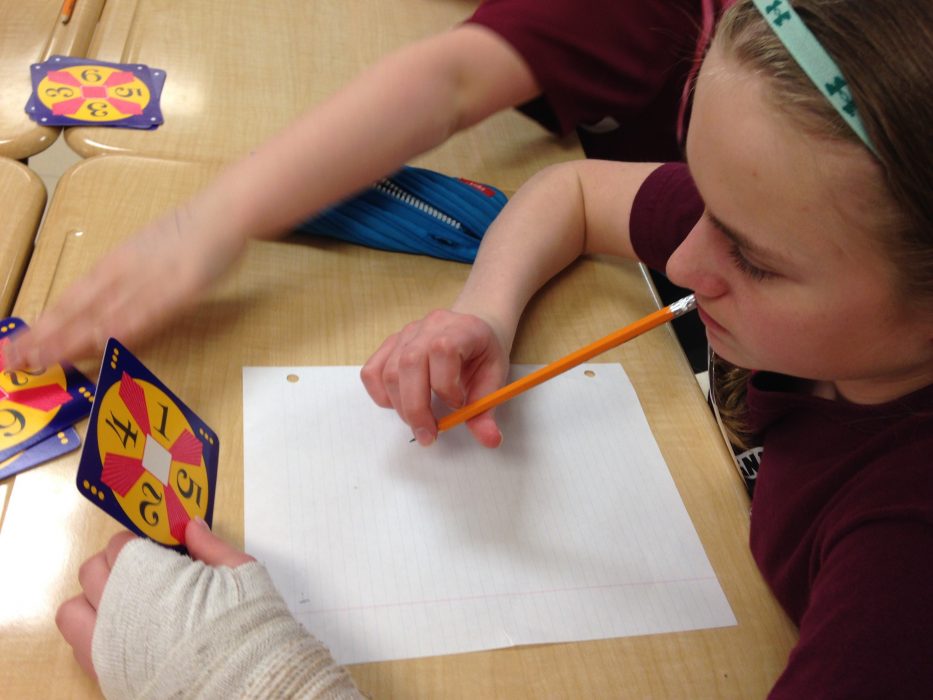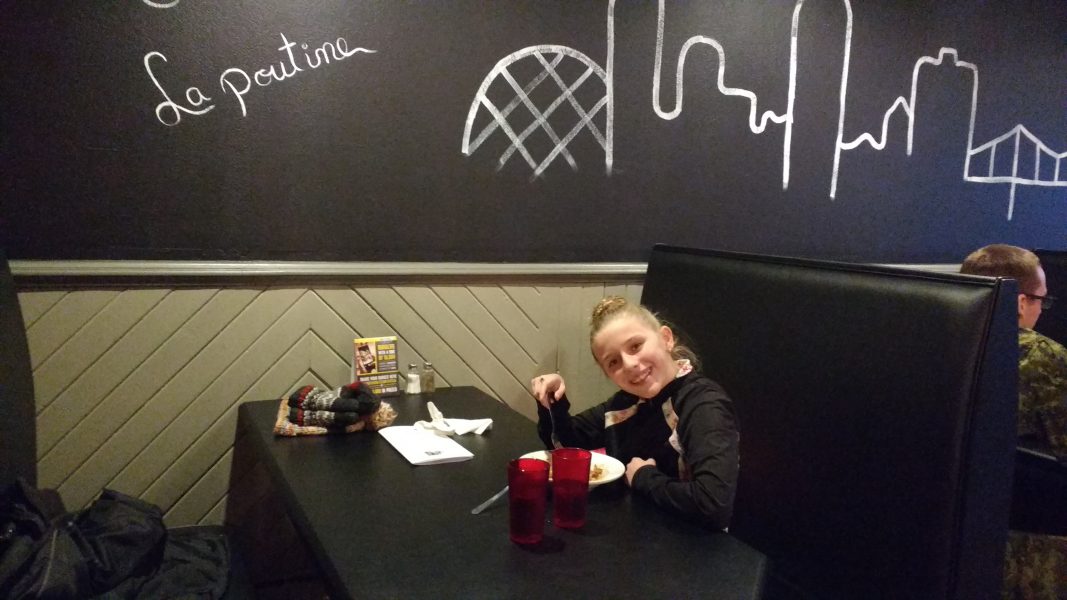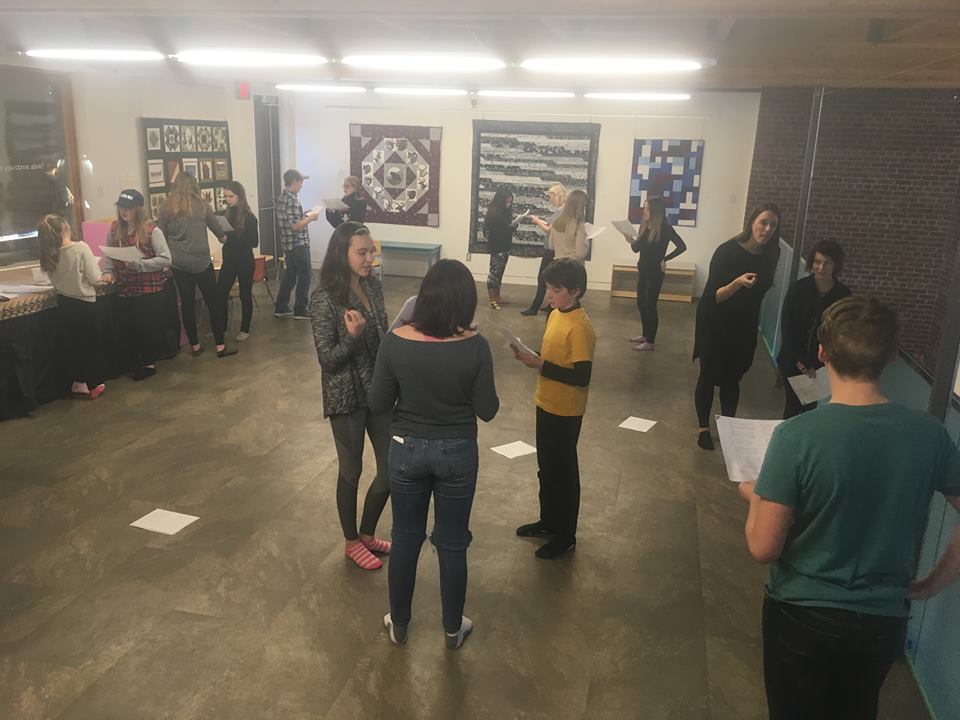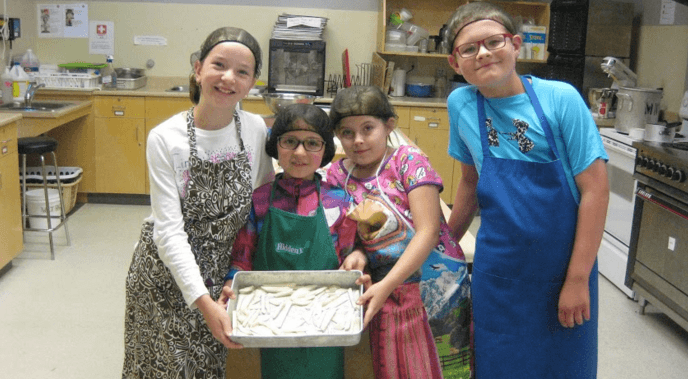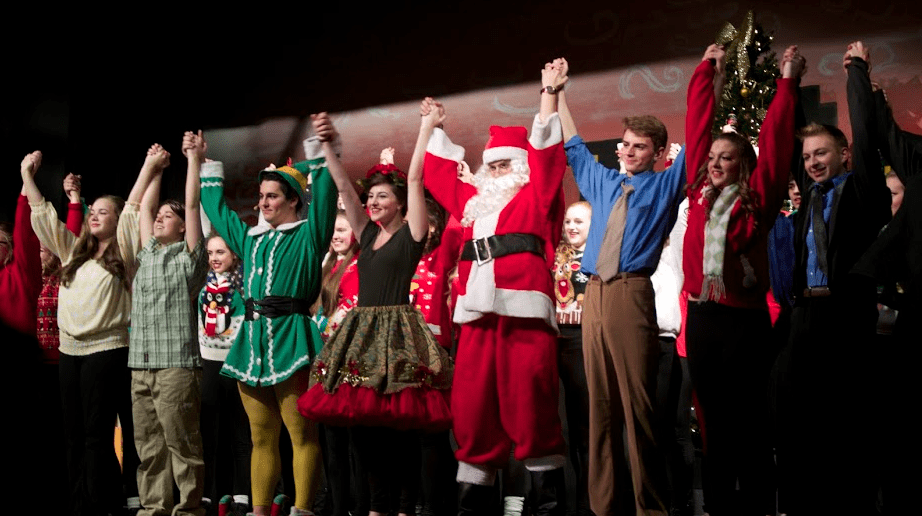Students Compete to go to Provincials
By Julia Gerry and Cadyn Dubuc (grade 6)
As I pulled into Superior CVI high school in April, I was blown away by how many people were attending the regional Math Olympics, hosted by NWOAME (Northwestern Ontario Association of Mathematics Education). There were
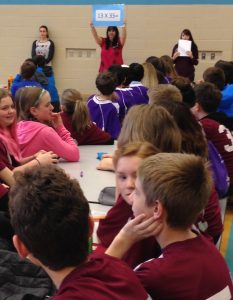
Math warmup
19 schools and almost 200 students in total. The first thing I noticed when I arrived was the line of students snaking out of the building waiting to register.
Once I got inside I was separated into my group for the Game of 24 and group problem solving. Later in the day we did a tangram relay. The groups had to work together to solve eight different puzzles using every tangram piece. Personally it was my favourite event of the morning and other students as well.
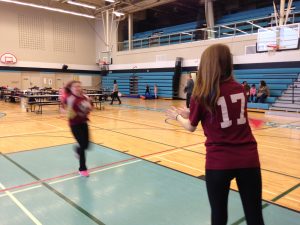
Tangram relay
“I liked the tangram relay because it involved running and not just sitting around. Also, I liked that you got to work as a team to build all the shapes in the time limit,” said Sarah McClelland, a grade 6 student from Agnew H. Johnston elementary school, who attended the Math Olympics. “I think it was more fun because you got to be creative with how you use the tangrams and you got to run for the pieces.”
“I liked the tangrams the best because I enjoyed putting the shapes together to
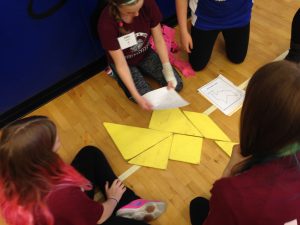
Tangram challenge
make a picture,” said Ezra Westerman, another grade 6 student who attended Math Olympics. Did you find the pictures hard to solve? “For the first part it was kind of hard but, as we went along we found patterns and once you finished one, we could plan out the next one.”
In the afternoon we got served a delicious pizza lunch and after we began our math relay competition. All 19 schools participated in the very intense relay. Groups of four answered various challenging questions. We had to run back and forth in between questions. If the answer was right on the first try your team got three points, two points on the second try, and one on the third try. If you got it wrong three times you moved on to the next question. The winners of the relay ended up being one of Agnew’s relay teams. I think the relay is great and, to back up my opinion, I asked multiple mathletes what they thought. Liam Francis (grade 7) said, “The relay was really fun. I liked how we got to work with our friends and solve team problems.”
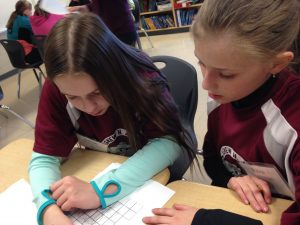
Sarah and Ezra problem solving
By the end of the day after the relay, the winners were announced. Some of the winning schools were Pope John Paul, E.Q. Jennings and Woodcrest. All first, second, and third place winners in grades 7 and 8 received medals.
I asked one of the organizers, Maria Casasola, who is also the vice-principal at Agnew, what their plans are for next year. “We plan on having the grade 6s back
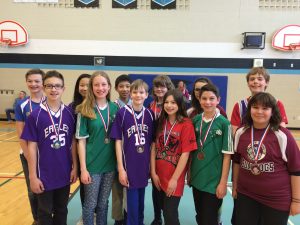
Math Olympics winners
at Math Olympics,” she said. “We are always looking for new challenging questions for the group work and the relay as well.” This was the first year that grade 6s have been invited to Math Olympics to get a feel for what it’s all about and to have fun. Next year we are very excited to go to Math Olympics 2017 and hope to learn more about mathematics.
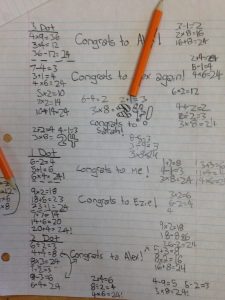
Math work
Thunder Bay Students Head to Provincial Math Olympics May 28th
By Payton Brodeur, Grade 6
Based on the results from the individual test in the 2016 regional Math Olympics in Thunder Bay, four winners, one from each gender and grade were chosen to compete in the provincial Math Olympics in Scarborough, Ontario on May 28, 2016. Lindsay Humeniuk from Pope John Paul and Fuyang Deng from E.Q. Jennings were the two grade seven winners who will be representing their schools. Daisy Xiao from E.Q. Jennings and Adam Luoma from Woodcrest were the two grade eight winners who will be representing their schools. The four students will not only be representing their schools, but Thunder Bay and region.
“Twenty Four” the Win
By Payton Brodeur, Grade 6
Students played the Game of 24 as one of the events. It was a great game that required quite a bit of thought. Or as Liam Francis, grade 7, says, “It teases your brain.” 24 is a game where you have cards with four numbers on it, and you have to make the number 24 using different strategies involving addition, subtraction, multiplication and division. You can only use the numbers once, and you have to use all the numbers. In the game there are three different levels: 1, 2 and 3 dot questions, which determine the difficulty of the card.


